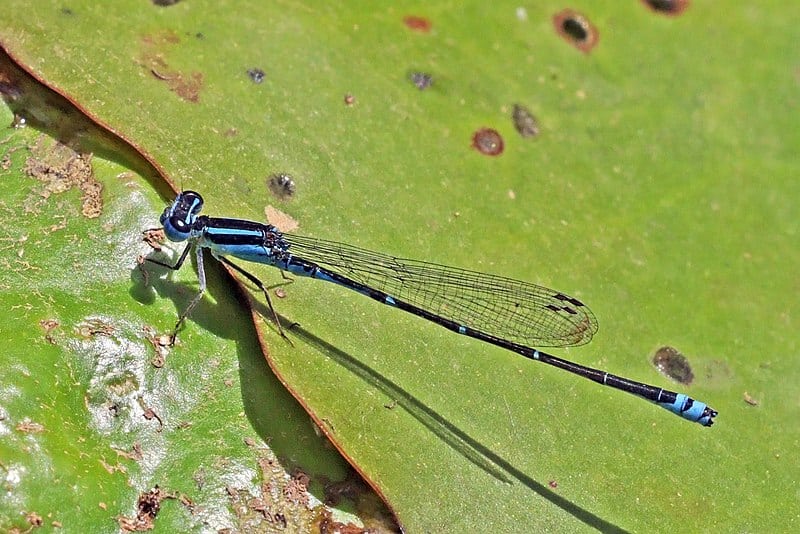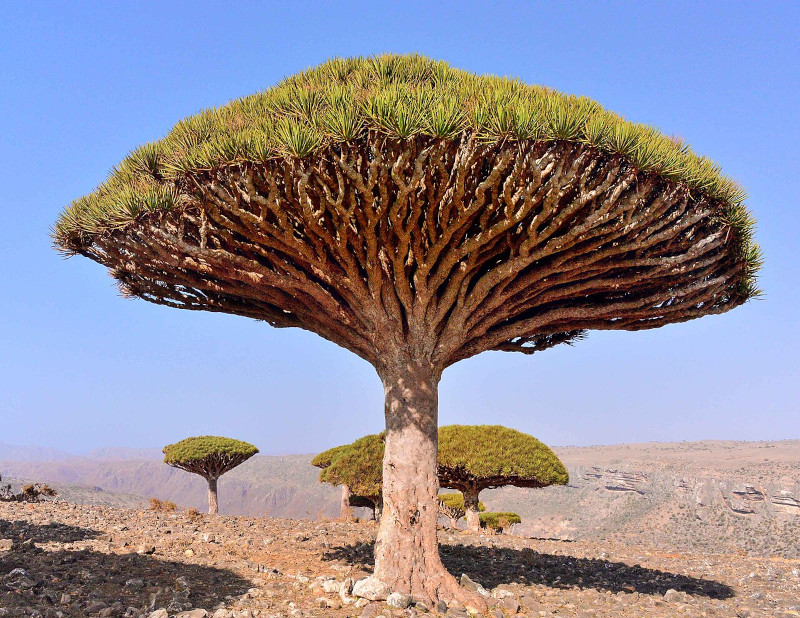Socotra Dragon Tree Facts
- People most often refer to this phenomenal creation of Nature by the attention-grabbing, and informative, common name of Socotra Dragon Tree. Yet, it also has other general titles. These include such equally distinctive titles as the Dragon’s Blood Tree and the Cinnabar Tree.
- Within the scientific community, however, it’s possibly better known by its technical designation. Like most such appellations, though, that’s somewhat difficult for the layperson to pronounce. That’s true because the unique flora holds the formal tag Dracaena cinnabari.
- This marvel of evolution received that specific moniker due to the efforts of Sir Isaac Bayley Balfour. The well-respected Scottish botanist recorded the first recognition of the flora as a separate and distinct species. He achieved that scientifically noteworthy deed in the year 1882.
- Local Indigenous Peoples long knew of the its existence, of course. Outsiders didn’t learn of its existence, however, until 1835. At that time, European explorers led by Lieutenant Wellsted of the East India Company sighted it. Science first gave it the name Pterocarpus draco.
- Unfortunately, the situation the Socotra Dragon Tree finds itself in seems to be deteriorating. This lamentable state also appears to extend across the entirety of its limited habitat range. Accordingly, the IUCN currently lists it as Vulnerable on its Red List of Threatened Species.
- It faces numerous threats to its continued existence as a species, both directly and indirectly. Most of these stem from the actions of mankind. These perils include such factors as industrial development and tourism, as well as the threats of habitat loss and ongoing climate change.
Related Articles



Socotra Dragon Tree Physical Description
The astounding Socotra Dragon Tree rarely fails to captivate those who see it for the first time. This amazing wonder of the botanical world generally does so due more to its distinctive appearance than sheer size, though. That’s true since, in that respect, it’s a moderate-sized tree variety.
Its trunk develops as relatively stout and thick in structure, typically branchin out from a single base. The bark of this part of the tree’s also generally smooth in texture. In color, it usually presents a light grayish shade. Mature specimens further attain average heights ranging from 33 – 39 ft (10 – 12 m).
The foliage also merits its own notice. Each leaf develops as long, stiff, and comparatively sword-shaped, being typical of its genus. These also grow in large clusters at the ends of the branches, and evolved as evergreen in nature. In length, these range from approximately 12 – 24 in (30 – 60 cm).
Grouped together, these form the tree’s most iconic feature. That’s the densely packed, umbrella-shaped crown for which its known. The numerous, interwoven branches grow outward in a nearly symmetrical, dome-like pattern, resembling the shape of an upturned mushroom or an umbrella.
Yet, the flowers and fruits of the Socotra Dragon Tree also deserve appreciation. The tree produces small, fragrant, white or green flowers, usually growing in clusters. Its fruit forms as a small berry, 0.4 – 0.8 in (1 -2 cm) in diameter, and turns orange-red when ripe. Each berry usually contains 1-3 seeds.
Its marvels don’t simply end there, however. Nature further provided it with one more natural quality which amazes most people. That’s due to the fact that the tree produces a dark red resin known as dragon’s blood, which seeps out when the bark becomes damaged in some way.
- Kingdom: Plantae
- Phylum: Tracheophyta
- Class: Liliopsida
- Order: Asparagales
- Family: Asparagaceae
- Genus: Dracaena
- Species: D. cinnabari
Socotra Dragon Tree Distribution, Habitat, and Ecology
The breathtaking Socotra Dragon Tree evolved as indigenous to an extraordinarily limited portion of the surface of the earth. That one of habitation’s location, however, likely won’t surprise, anyone, given that it’s implied in the very name. The natual wonder’s native to a tiny region West Asia.
More specifically, it’s native to the Socotra Archipelago, situated in the Arabian Sea. Though a few trees do appear on other islands in the group, the vast majority of its population lives on Socotra itself. Yet, even there, its numbers principally appear in only certain very specific regions.
Due to having evolved in isolation, and in such an extremely limited area, the marvelous Angiosperm displays decidedly specific requirements regarding its choice of habitats. The unique tree also primarily develops in regions composed of relatively arid, mountainous areas of the island.
The remarkable product of evolution’s thus typically found in higher elevations, ranging from roughly 980 – 4,920 ft (300 -1,500 m) above sea level. The much cooler temperatures and higher humidity in these elevated areas help the tree survive the island’s otherwise harsh, dry conditions.
There, it grows on limestone plateaus and in rocky, well-drained soils. The rugged terrain provides stability for its roots and reduces competition from other plants. Its climate here’s also characterized by low rainfall, so it relies on mist and dew to provide much of its moisture needs.
Some examples nevertheless do appear in other environments, though. As a reslt, the hardy tree’s often part of open woodlands or sparse forests, where it grows in clusters or even sometimes small groves. These areas occasionally develop as interspersed with other drought-resistant plants.
Despite studies, certain details concerning the Socotra Dragon Tree continue to elude researchers. The exact pollinators of its flowers aren’t well documented, but scientists logically believe these to consist of various local insect species that are drawn to the nectar in the numerous small flowers.
The copious numbers of very small, orange-red berries produced by the tree attract large numbers of animals, especially birds. These animals naturally eat the berries and then subsequently spread the seeds via their droppings, helping with the tree’s ongoing reproduction and genetic diversity.
Species Sharing Its Range



Check out our other articles on 5 Geological Wonders of Australia, Eurasian Red Squirrel, Mount Erebus, Snake Plant, Jack Jumper Ant, Eurasian Griffin Vulture, Blue-lipped sea krait












Leave a Reply